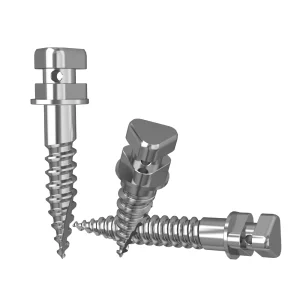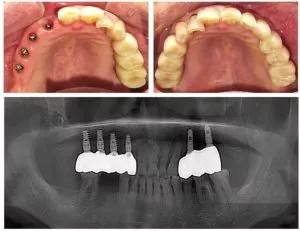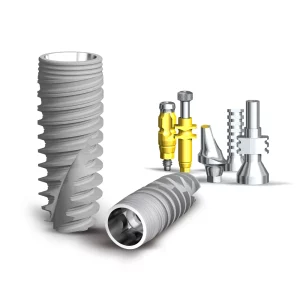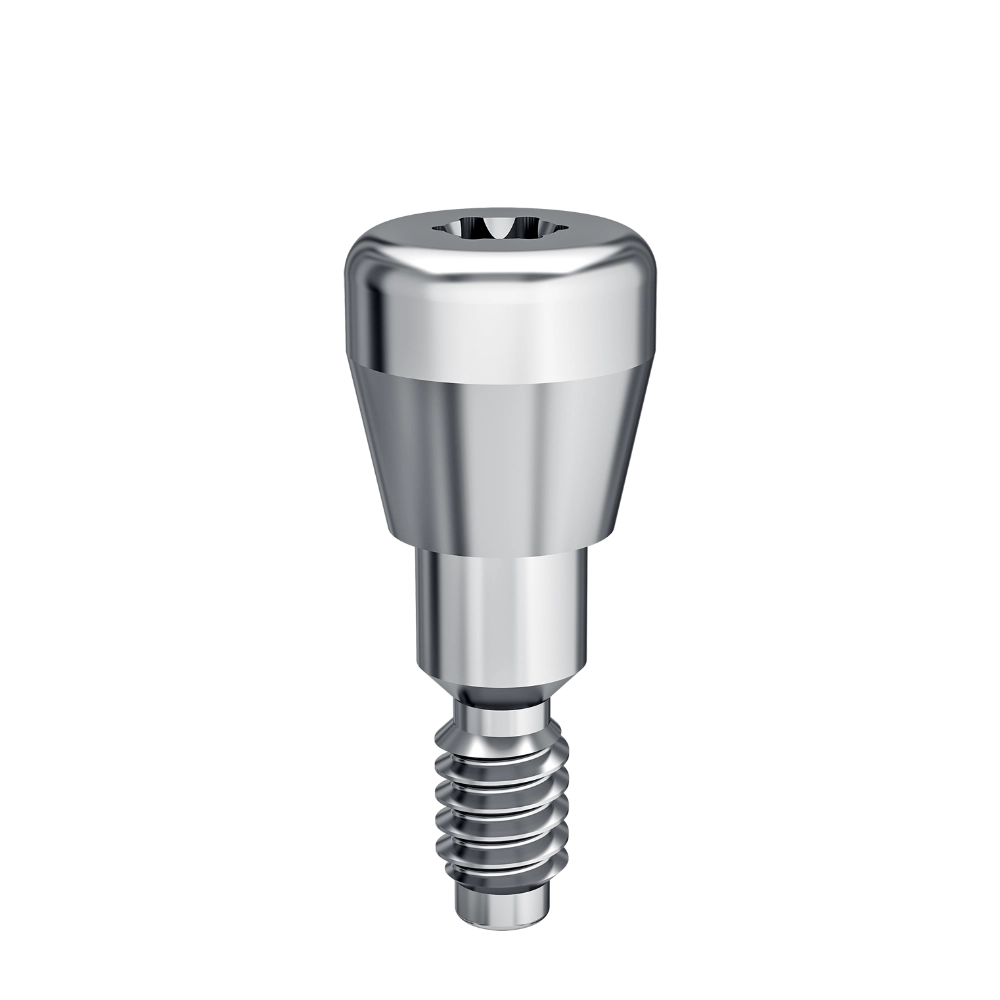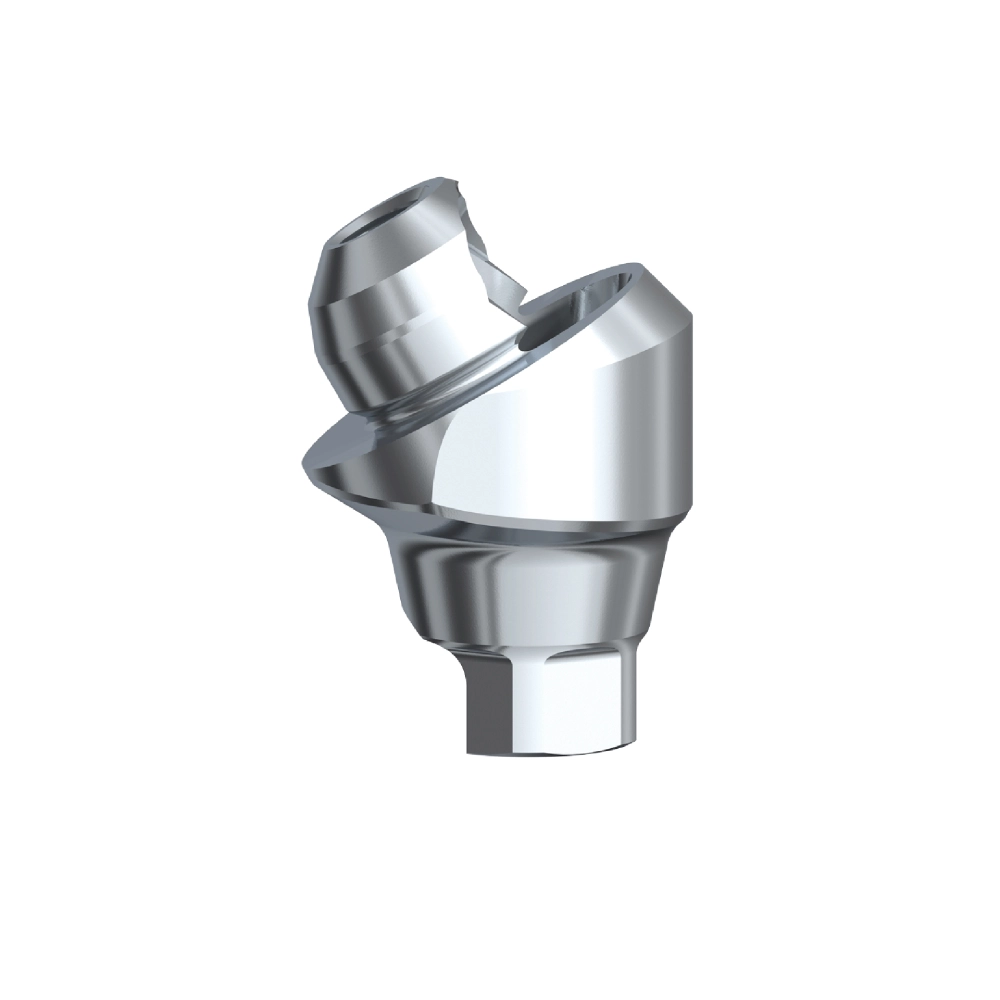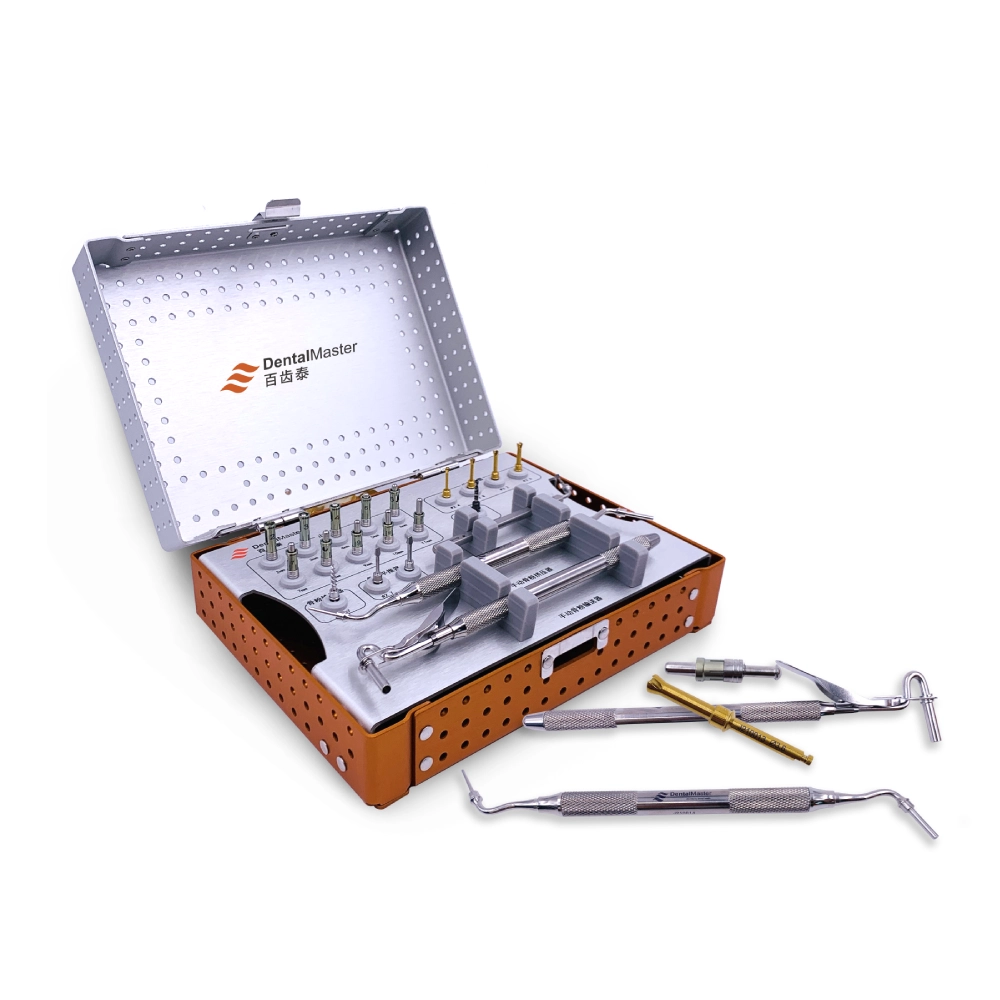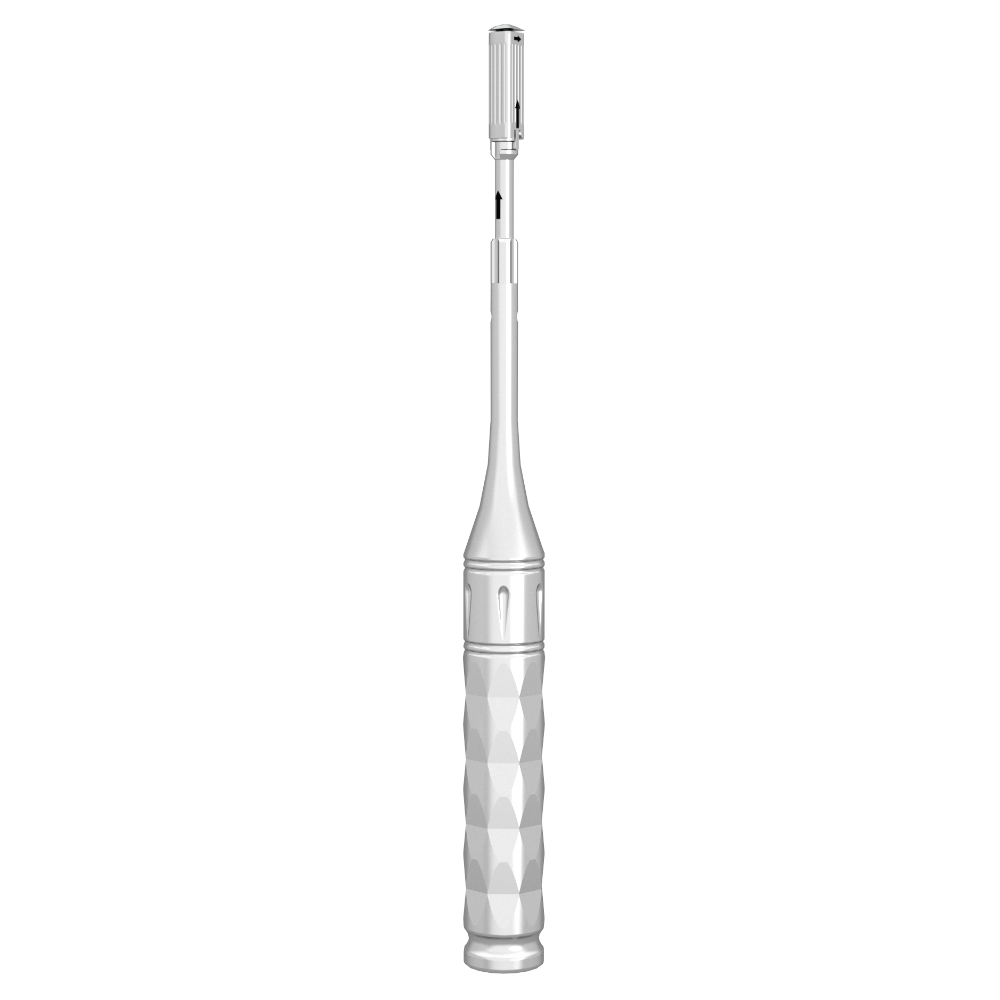No campo dos implantes dentários, o sucesso do tratamento do paciente depende muito de um conhecimento profundo das técnicas de moldagem, em particular da capacidade de avaliar e aplicar cada método com exatidão. As moldagens de implantes são principalmente categorizadas em dois tipos: moldagens de moldeira aberta e moldagens de moldeira fechada.
Tanto as técnicas de moldeira fechada como as de moldeira aberta têm as suas vantagens e limitações únicas. É crucial compreender bem estas diferenças subtis, uma vez que as diferentes situações clínicas requerem frequentemente técnicas de moldagem específicas e não escolhas arbitrárias.
A obtenção de uma impressão exacta desde o início não só ajuda a evitar a frustração de refazer a impressão devido à má qualidade da mesma, como também permite aos médicos prestar cuidados excepcionais com maior confiança.
Técnicas de impressão dentária
Quando os dentistas de restauração realizam a tarefa crítica de criar a impressão final, são confrontados com uma decisão essencial: selecionar o método mais adequado para esta etapa crucial.
Para garantir a precisão e exatidão, a escolha entre uma moldagem com moldeira fechada ou uma moldagem com moldeira aberta pode tornar-se a opção preferida, ou mesmo indispensável, em alguns casos. Isto porque a obtenção de dados exactos de moldagem de implantes desempenha um papel fundamental no sucesso geral do procedimento de implante.
O que é uma impressão de tabuleiro aberto?
Um impressão de tabuleiro aberto é uma técnica especializada para captar uma impressão exacta do implante e do tecido circundante, fixando uma coifa de impressão no implante e estendendo um parafuso de fixação através da moldeira até ao material de impressão.

Procedimento:
- Fase de preparação: Em primeiro lugar, o médico instala uma coifa de impressão no implante, certificando-se de que encaixa firmemente para garantir a exatidão da impressão.
- Seleção e colocação da moldeira: Em seguida, o médico seleciona uma moldeira adequada com base na condição oral do doente e coloca-a na boca do doente, assegurando um contacto estreito com o implante e o tecido circundante.
- Fixação do parafuso: Em seguida, o médico passa o parafuso de fixação através da moldeira através de uma abertura, inserindo-o no material de moldagem para ligar firmemente a moldeira ao implante, evitando movimentos ou deformações durante o processo de moldagem.
- Injeção do material de moldagem: Depois de fixar a moldeira, o médico injecta o material de moldagem na moldeira, assegurando a cobertura total do implante e do tecido circundante.
- Aguardar a cura: O material de impressão necessita de tempo para curar. O paciente deve manter a boca aberta até que o material solidifique completamente.
- Remoção da impressão: Quando o material estiver curado, o médico desenrosca a coifa de impressão através da abertura da moldeira e remove cuidadosamente a moldeira e a impressão da boca do paciente.
Caraterísticas e vantagens:
- Elevada precisão: O desenho do parafuso de fixação e da coifa de impressão garante a precisão da impressão, proporcionando uma base fiável para o trabalho de restauração subsequente.
- Versatilidade: As moldagens em moldeira aberta são adequadas para uma gama de condições orais complexas, especialmente quando a posição, direção e ângulo do implante constituem um desafio.
- Facilidade de utilização: Embora esta técnica exija alguma perícia e experiência, é relativamente simples e fácil de dominar em comparação com outros métodos de impressão.
Precauções:
- Seleção da moldeira: O médico deve ter em conta a condição oral do doente, a posição do implante e a direção para garantir que a moldeira se adapta perfeitamente à boca do doente.
- Controlo do material de moldagem: O médico tem de controlar a quantidade de material de moldagem injetado para garantir que cobre totalmente o implante e o tecido circundante sem desperdício ou extravasamento.
- Conforto do doente: Durante o processo de cura, o doente tem de manter a boca aberta, o que pode causar desconforto ou fadiga. O médico deve comunicar este facto com antecedência e tranquilizar o doente durante o procedimento.
O que é uma moldagem em moldeira fechada?
O técnica de moldagem com moldeira fechada envolve a utilização de uma moldeira completamente fechada para captar a impressão, com os bordos da moldeira em contacto estreito com os tecidos moles da cavidade oral, formando assim um espaço de impressão selado. O material de impressão é injetado neste espaço e, depois de curado, a moldeira e a impressão são removidas da boca.

Procedimento:
- Fase de preparação: O médico instalará uma coifa de transferência ou tampa de moldagem no implante para garantir que o material de moldagem replica com exatidão a posição e a forma do implante.
- Seleção e colocação de tabuleiros: Com base na condição oral do doente e na posição do implante, o médico seleciona uma moldeira fechada de tamanho adequado e coloca-a na boca do doente, assegurando que os bordos da moldeira estão em contacto estreito com os tecidos moles.
- Injeção de material de moldagem: Assim que a moldeira estiver corretamente posicionada, o médico injecta uma quantidade adequada de material de moldagem na moldeira para assegurar a cobertura completa do implante e do tecido circundante.
- À espera da cura: O material de impressão necessita de um determinado período de tempo para curar, durante o qual o médico pedirá ao paciente para manter a boca aberta até o material solidificar completamente.
- Remoção da moldeira e do molde: Após a cura do material de moldagem, o médico retira toda a moldeira e o molde da boca do paciente.
Caraterísticas e vantagens:
- Alta precisão: O contacto estreito entre os bordos da moldeira e os tecidos moles orais cria um espaço de impressão selado, garantindo a precisão da impressão.
- Facilidade de utilização: Em comparação com outras técnicas de moldagem, o método da moldeira fechada é relativamente simples de utilizar e fácil de dominar.
- Erro reduzido: A natureza fechada da moldeira ajuda a evitar erros provocados pelo movimento ou pela fala do doente durante o processo de moldagem.
Precauções:
- Escolher o tabuleiro correto: O médico deve ter em conta a condição oral do doente, a posição e a direção do implante e outros factores ao selecionar uma moldeira para garantir um ajuste perfeito na boca do doente.
- Controlo da quantidade de material de moldagem: Ao injetar o material de moldagem, o médico tem de controlar a quantidade injectada para assegurar a cobertura total do implante e do tecido circundante, evitando desperdícios e extravasamentos.
- Manter a boca aberta: Durante a polimerização do material de impressão, o doente tem de manter a boca aberta, o que pode causar algum desconforto e fadiga. Por conseguinte, o médico deve comunicar este facto claramente ao doente com antecedência e prestar-lhe apoio psicológico e tranquilidade adequados durante o procedimento.
Impressão em moldeira fechada vs. impressão em moldeira aberta
Ao escolher entre moldes de moldeira fechada e moldes de moldeira aberta, é essencial considerar a situação específica do doente, as necessidades cirúrgicas e a experiência e competências do médico. Seguem-se algumas sugestões de seleção:
- Quando escolher a moldagem em moldeira fechada
Estrutura oral relativamente simples: Se a estrutura oral do doente for simples, sem caraterísticas anatómicas complexas ou alterações patológicas, uma moldagem com moldeira fechada pode ser a melhor escolha. Proporciona um ambiente de moldagem relativamente fechado e estável, garantindo precisão e exatidão. - Localização concentrada do implante: Quando os implantes estão localizados numa área concentrada da boca, as moldagens em moldeira fechada podem cobrir mais facilmente todos os implantes e reduzir os erros causados pelo movimento ou fala do paciente.
- Reduzir o desconforto do paciente: As moldagens com molde fechado oferecem normalmente uma melhor vedação, minimizando o fluxo e o extravasamento dos materiais de moldagem na boca, reduzindo assim o desconforto do doente.
- Quando escolher a impressão de tabuleiro aberto
Estrutura oral complexa: Para doentes com estruturas orais complexas, localizações de implantes dispersas ou alterações patológicas, as moldagens em moldeira aberta podem ser mais adequadas. Este método permite que os médicos façam ajustes flexíveis quando necessário, garantindo a exatidão e a integridade da impressão. - Necessidade de maior precisão: Em determinados casos, como quando são necessárias restaurações de alta precisão, as moldagens em moldeira aberta podem proporcionar uma melhor precisão. Permitem aos médicos efetuar operações mais delicadas durante o processo de moldagem para captar alterações subtis no implante e no tecido circundante.
- Clínicos experientes: Os médicos experientes podem ser mais competentes na utilização da tecnologia de moldagem com moldeira aberta. Podem ajustar de forma flexível a posição e o ângulo da moldeira para obter o melhor efeito de moldagem com base na situação específica do doente e nas necessidades cirúrgicas.
Considerações gerais
Ao escolher entre impressões de moldeira fechada e moldeira aberta, os seguintes factores também devem ser considerados de forma abrangente:
- Desempenho dos materiais de moldagem: As diferenças no desempenho dos vários materiais de moldagem podem afetar a precisão e a estabilidade da moldagem. Por conseguinte, ao selecionar o tipo de moldeira, devem ser consideradas as caraterísticas e o desempenho do material de impressão.
- Tempo e custo da operação: Podem existir diferenças no tempo de operação e no custo entre moldagens com moldeira fechada e moldeira aberta. Os médicos têm de ponderar o tempo de operação, o custo e a precisão e exatidão da impressão de acordo com a situação específica do doente e as necessidades cirúrgicas.
- Preferência e conforto do paciente: A preferência e o conforto do doente são também factores cruciais na seleção do tipo de moldeira. Os médicos devem comunicar plenamente com os doentes para compreender as suas necessidades e expectativas, assegurando que o tipo de moldeira selecionado satisfaz as expectativas do doente e aumenta a taxa de sucesso do procedimento.
Materiais de impressão para implantes dentários
Entre os materiais de impressão para implantes dentários, os tipos mais utilizados incluem as seguintes categorias
Materiais de impressão de alginato
Os materiais de impressão de alginato são materiais elásticos e irreversíveis que têm sido utilizados na restauração clínica oral desde meados do século XX. As suas vantagens incluem o baixo custo, a facilidade de utilização e a elevada biocompatibilidade, tornando-os amplamente utilizados na prática clínica. No entanto, a sua principal desvantagem é a retração significativa, que pode impedir que reflictam com precisão o estado dos dentes. Para restaurações de implantes que requerem impressões de alta precisão, o alginato pode não ser a melhor escolha.
Materiais de impressão em borracha de silicone
A borracha de silicone é um tipo de borracha de polímero sintético. Como material de impressão, oferece vantagens como alta resistência, boa elasticidade e fluidez, excelente plasticidade, estabilidade dimensional, alta precisão e propriedades químicas estáveis. Atualmente, a borracha de silicone é considerada o tipo mais ideal de material de moldagem. Os materiais de impressão de borracha de silicone são classificados em borracha de silicone de polímero de condensação, borracha de silicone de polímero de adição e borracha de poliéter. Entre estes, a borracha de silicone de polímero de adição (borracha de silicone tipo A) tem uma dureza final mais elevada, o que a torna adequada para impressões de implantes dentários.
Materiais de impressão de poliéter
Os materiais de moldagem de poliéter também possuem uma elevada dureza final e são amplamente utilizados na prática clínica. Podem cumprir os requisitos das próteses sobre implantes relativamente à estabilidade morfológica, à taxa de recuperação elástica e à biocompatibilidade, ao mesmo tempo que realçam a importância da dureza final nos materiais de moldagem. Por conseguinte, são adequados para efetuar impressões de implantes.
Outros materiais de impressão
Para além dos materiais de impressão comuns acima mencionados, existem outros tipos, como os materiais de impressão de ágar; no entanto, estes são relativamente raramente utilizados para impressões de implantes.
Conclusão
Ao escolher entre moldes de moldeira fechada e moldes de moldeira aberta, considere as circunstâncias específicas do paciente, as necessidades cirúrgicas e a experiência e competências do médico. As moldagens com moldeira fechada podem ser mais apropriadas para pacientes com anatomia oral simples, localizações de implantes centralizadas e menos desconforto para o paciente. As moldagens com molde aberto podem ser mais apropriadas para pacientes com anatomia oral complexa, localizações de implantes descentralizadas ou patologia. As impressões de moldeira aberta podem proporcionar uma melhor exatidão em restaurações de alta precisão. Uma moldagem exacta desde o início ajuda a evitar repetições devido à fraca qualidade da moldagem e permite aos médicos prestar cuidados superiores com maior confiança.

